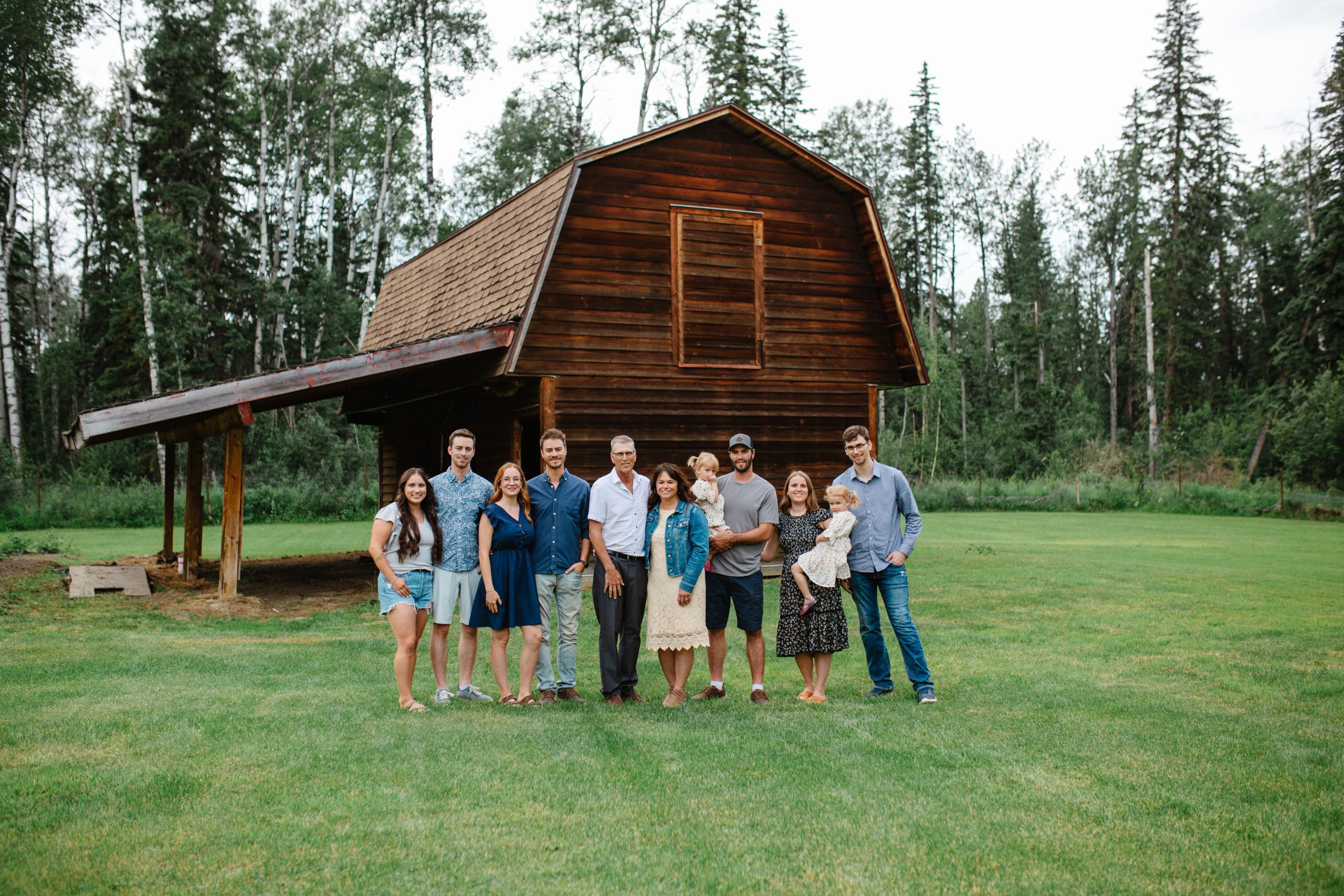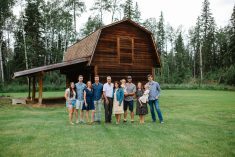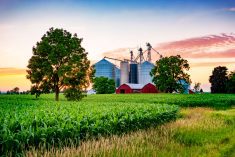The odd thing is that machinery costs are very similar for farms across Canada, averaging 14 to 15 per cent of crop revenue. But if you pick any one locality — including yours — the costs of owning and operating farm equipment are all over the proverbial map.
Machinery costs vary much more from farm to farm than any other input, including seed, fertilizer and crop protection. It’s enough to make you ask, is your machinery working for you, or are you working for it?
“Per-acre cost of items like seed, fertilizer and fuel, and perhaps even labour to a lesser extent, are relatively smooth across different types of production,” confirms Jared Carlberg, an agricultural economist at the University of Manitoba.
Read Also

The farm transition trial
For anyone affected by cancer, they have likely heard the adage that “a person doesn’t get cancer, the family does.”…
In some ways, it makes sense. As farmers have gotten bigger, more acres qualify for value discounts from seed, fertilizer and chemical dealers. Precision farming has also improved accuracy, so there’s less under-and over-application.
But the machinery issue seems a much more complex one.
“In years like this, it might be tempting to try and improve your equipment too fast. If it goes the right way, it can pay off for you, but nobody can give you that kind of certainty,” says Grant Palmer, policy economist at Manitoba Agriculture, Food and Rural Initiatives.
With strong commodity prices, many farmers feel they can’t afford to lose a single bushel of yield potential. That means a zero tolerance for slow planting because of a worn seeder, or for field losses at harvest due to an older combine. These farmers will do everything they need to in order to get every possible bushel, including taking on big debt to improve what they’ve got in the shed.
At the end of the day, they’re increasing their per-acre costs, and they’re gambling that prices will be strong enough for long enough to make the gamble pay.
It’s your call
Management decisions contribute enormously to the high variation in machinery costs. You’re wearing your manager’s hat, after all, when you determine if you’re over-or under-equipped, or whether you should buy used or new.
Often, farmers have a pretty good idea where the balance point is, says the University of Manitoba’s Carlberg. “But in some cases that’s not true, and you have people with a lot of steel sitting around more than it needs to be.”
Or, you have farmers that are scrimping on machinery. “Liquidity is tight and so you have people spending a lot more time fixing stuff than maybe is optimal,” says Carlberg.
In some cases, the reason for cost variability is obvious, such as the difference between using till and no till. “For the corn crop in Ontario, using the Ontario ministry’s budget for grain corn, they’re saying the tractor, machinery and repair expenses are $39.25 an acre,” says Ken McEwan, economics researcher for the University of Guelph at Ridgetown. “If you’re growing no till, it’s $21.95 an acre.”
Mixed farms are another factor that stand out, as their operators require equipment for grain but also for, say, haying — balers, conditioners, stacking equipment — or specialized equipment for silage.
Tough times on cattle farms have had the effect of putting stress on equipment as the margins often haven’t been there to keep machinery up to date. With little debt carrying capacity for equipment on beef farms, many farmers are using older equipment and repairing more often to make do — a stark contrast from the grain sector, and if the machinery is often dead in the middle of a field waiting for a repair truck, a low-priced machinery inventory can actually lead to a high per-acre machinery cost.
Yet good times can also have a negative effect on per-acre machinery costs. According to a Meyers Norris Penny study prepared for Alberta Agriculture, farmers spent a disproportionate chunk of their 2008 and 2009 profits on fixed assets like machinery, even though equipment prices were at record highs in response to increased demand.
Good guides are available. “Our budget assumes equipment investment of $275 to $325 per acre — everything from grain trucks to combines and tillage equipment, swathers, etc.,” says Palmer. “In my opinion, if you pull it off and make it work, that’s a good target, but my suspicion is that you’ll find more farms that are higher than that.”
There’s also good advice. Jesse Cole, Cole, production crops economist with Alberta Agriculture, says it’s particularly important to monitor machinery costs: “Because it’s something you can control.”
Cole points again to the MNP study, which dispelled the popular myth about newer equipment and cost savings on repairs. Although the frequency of repairs may be lower with new machines, older equipment typically costs less per repair. And when you balance repairs against depreciation, you see in fact that repair expenses decline at about a quarter of the rate that the costs of capital and depreciation increase.
While a new $300,000 combine could mean improved efficiency, it could also spell $24,000 in depreciation costs, assuming eight per cent a year on depreciation. On 2,000 acres, that adds $12 an acre to your cost of production.
Meanwhile a five-year-old $100,000 combine would mean only $8,000 a year depreciation. When spread over 2,000 acres would amount to only $4 an acre.
“You really have to boil it down to your machine costs per acre per year if you’re buying equipment,” says Cole.
But new can be better
There can be advantages to buying new. Nothing operates in isolation on a farm, after all, and increased reliability of any one piece of equipment could improve timeliness of all field operations.
“There are definite windows where we need to get everything done,” says Cole. “So you always have to factor that in as well, and that’s really hard to value. What’s your yield difference between seeding two days later than two days earlier, when you might have had a rain event that increased your emergence?”
For a high-value crop like edible beans in Manitoba or Ontario, if your machine breaks down and you aren’t able to harvest that crop on that particular day, it can be devastating, says Guelph’s McEwan.
“With new equipment you’re reducing weather risk or timing risk or labour risk, and offsetting that with depreciation risk,” agrees Palmer.
An additional element in machinery cost variability is the size of farms. McEwan notes that in Ontario, grains and oilseeds operations with revenues of over $1 million will have farm machinery assets of around $1.1 million. That compares with over $456,000 in assets for medium-sized farms ($500,000-$1 million in revenue), and nearly $343,000 for small farms ($250,000-$500,000).
“So when you’re picking up all this extra production and you’re thinking about adding a combine or something, you really have to pencil that stuff out — is my cost per acre going to go up or down?” says Cole.
New machinery must be sized correctly and run as long as possible, over two shifts if necessary.
“Machinery is where you really have to be disciplined,” says agricultural economics professor Dick Schoney of the University of Saskatchewan, who warns “Once you get the big machinery, you have to push it. You can’t have too much overcapacity, or it’s real expensive.”
There’s psycnology too. In a small town where everyone knows everyone, there’s a certain prestige to walking into the coffee shop when you’ve bought a new combine.
“It’s a symbol of success and if you have this new equipment, it looks like you’re doing well. So community plays into it quite a bit,” Cole says.
Hiring of custom operators can also play into the wide range in farm to farm equipment costs, but again, that comes with considerations: are the production practices of the custom seeder the same as your own and, if not, could it result in lost yield?; when you feel it’s time to spray, can you count on the custom applicator to come when you need him?
A hard job gets harder
Custom work may be an ideal fit for many livestock farms in Ontario that grow grain corn, for while the planting window is small, there’s much more leeway for harvesting.
“So rather than have $200,000 or $300,000 sitting in a combine that you don’t really use that much, perhaps custom work makes more sense,” says McEwan.
Another wrinkle in pegging machinery costs is that a lot of equipment is being leased, McEwan adds. “It comes down to what is your tax position, the profitability of your farm, how much debt you want to carry,” McEwan says. “Machinery investment is quite a complicated piece of work.
“If you want to develop a strategy and a low-cost way of doing things, you have to be very conscious of the crops you grow and the working days,” says McEwan. “There’s a lot to it.”
The danger sometimes isn’t obvious. Instead, it can take years to show. Schoney in particular emphasizes that farms must be competitive for the next generation, but not every farmer necessarily thinks about that.
“I’ve heard guys say, ‘Why can’t this generation make it? I did.’ Well, partly it’s the way they set them up — over-equipped or needing to pay things off,” Shoney says. “Realistically, it’s got to be a competitive farm.”
Carlberg says most farmers are shrewd operators, but he also thinks they’re being let down by the lack of effective, detailed help. Some provinces are worse, some are better. (Carlberg says Alberta leads the way in quality of information.)
“It’s a little bit of a Catch-22,” Carlberg says. “Universities and the public sector need to be doing a better job.”CG















